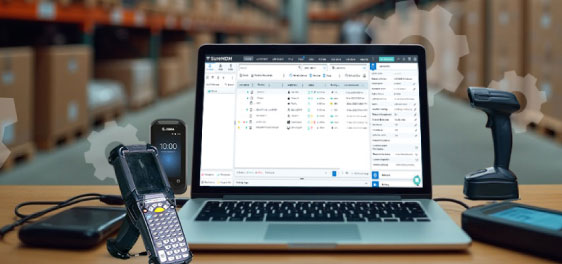Future of Rugged Device Management: Trends and Innovations
Okt 14, 2025 | Upasna Kesarwani
From warehouses and factory floors to hospitals and oil rigs, rugged devices are the unsung heroes of frontline operations. Built to withstand drops, dust, water, and extreme temperatures, rugged smartphones, tablets, scanners, and handhelds enable workers to perform mission-critical tasks even in the harshest environments.
But rugged devices are only as effective as the systems that manage them. As organizations scale, IT teams face increasing challenges in ensuring that rugged devices remain secure, compliant, and always available for workers who rely on them. This is where rugged device management comes into play.
Looking ahead, the future of rugged device management is being shaped by emerging technologies, rising security demands, and industry-specific needs. Let’s explore the key trends and innovations that businesses must prepare for.
1. Cloud-First Rugged Device Management
Traditional on-premise solutions are giving way to cloud-based rugged device management platforms. Cloud deployment offers several advantages:
- Scalability: Businesses can easily add or remove devices as operations expand or contract.
- Global accessibility: IT teams can monitor and manage devices across multiple sites without geographical restrictions.
- Cost efficiency: Eliminating the need for heavy on-prem infrastructure reduces upfront costs and maintenance overhead.
For instance, a logistics company that uses thousands of rugged scanners in its warehouses around the world can easily send software updates from one central cloud dashboard, making sure all devices stay up-to-date and package tracking never stops.
2. AI and Automation in Device Monitoring
The future is intelligent automation. Rugged device management solutions are increasingly leveraging AI and machine learning to simplify IT workloads:
- Predictive analytics to forecast hardware failures.
- Automated workflows to handle patch updates and policy enforcement.
- Real-time anomaly detection to identify unusual device activity.
Imagine a manufacturing unit where rugged tablets monitor the performance of the assembly line. With AI-driven insights, IT teams can detect battery health decline or network issues early, reducing downtime and preventing production delays.
3. Enhanced Security for Rugged Devices
Rugged devices often operate in remote or high-risk areas—making them vulnerable to unauthorized access, malware, and data breaches. Future solutions will strengthen rugged device management with:
- Zero-trust frameworks that verify users and devices at every access point.
- Advanced threat detection with AI-driven monitoring.
- Regulatory compliance automation for industries like healthcare (HIPAA) and retail (PCI DSS).
Consider field service teams who access sensitive customer data on rugged tablets. Advanced rugged device security ensures that even if a device is lost or stolen, corporate data remains encrypted and inaccessible.
4. Unified Endpoint Management (UEM) for Rugged Fleets
The line between rugged and non-rugged devices is blurring. Organizations increasingly want a single pane of glass to manage all endpoints—laptops, smartphones, rugged handhelds, wearables, and even IoT devices.
Unified Endpoint Management (UEM) solutions like 42Gears SureMDM are at the forefront of this shift. For instance, a retail chain can manage rugged POS devices, employee tablets, and back-office desktops from one platform—reducing complexity and improving IT visibility.
5. 5G and Edge Computing Capabilities
As industries embrace 5G and edge computing, rugged devices will take center stage in real-time data collection and processing. Device management platforms must evolve to support:
- High-speed data transfer for remote operations.
- Edge intelligence that processes data locally, minimizing latency.
- Always-on connectivity for critical tasks like asset tracking and emergency response.
For example, utilities companies deploying rugged devices in the field can leverage 5G-enabled management to get instant updates on infrastructure status, helping crews make faster, more informed decisions.
6. Industry-Specific Customizations
The future of rugged device management will not be one-size-fits-all. Solutions will become vertical-specific, offering tailored features for different industries:
- Logistics: Barcode scanning optimization, geofencing, and delivery route compliance.
- Healthcare: Secure handling of patient records, HIPAA compliance, and device sanitization policies.
- Retail: POS system monitoring, real-time inventory management, and kiosk lockdown.
- Construction: GPS-based workforce management and rugged device health tracking.
By addressing these unique requirements, rugged device management ensures that frontline workers get tools designed for their workflows.
7. Sustainability and Longer Device Lifecycles
With growing focus on sustainability, organizations are looking to extend device lifecycles instead of frequent replacements. Rugged device management platforms will integrate features like:
- Battery optimization and monitoring to prolong usage.
- Proactive maintenance alerts to avoid hardware failure.
- Repair analytics to decide when to fix vs. replace.
This not only reduces costs but also minimizes e-waste—an increasingly important factor for enterprises adopting green IT practices.
Preparing for the Future with 42Gears
At 42Gears, we believe the future of rugged device management lies in intelligence, automation, and adaptability. Our SureMDM platform is designed to help businesses:
- Secure rugged devices with advanced compliance controls.
- Automate updates, monitoring, and policy enforcement.
- Manage rugged fleets alongside other endpoints under a single console.
- Leverage analytics to maximize device performance and lifecycle.
Whether you’re in logistics, healthcare, retail, manufacturing, or field services, 42Gears ensures your rugged devices are future-ready, secure, and productive.
Final Thoughts
Rugged devices will remain indispensable for industries that rely on frontline workers. But managing them requires a forward-looking strategy that combines security, intelligence, and scalability.
The future of rugged device management is clear:
- Cloud-first platforms for agility,
- AI and automation for smarter monitoring,
- UEM integration for unified control,
- 5G and edge capabilities for real-time operations, and
- Sustainability initiatives for longer device lifecycles.
By adopting modern rugged device management solutions like 42Gears SureMDM, organizations can not only improve workforce productivity but also stay ahead of technological shifts shaping the next decade.
Ready to future-proof your rugged fleet?
Subscribe for our free newsletter


